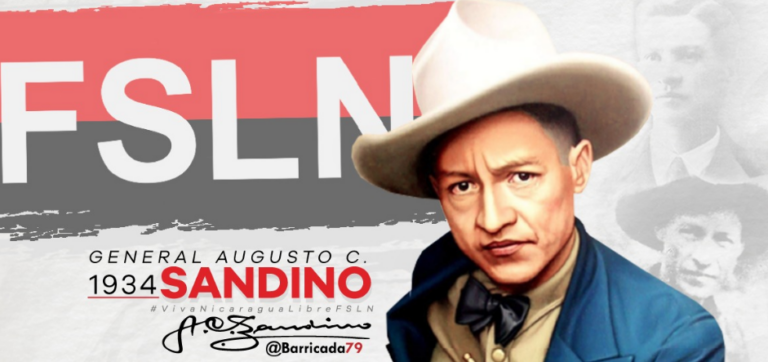
On Wednesday, Nicaraguans celebrated the 90th death anniversary of Gen. Augusto Cesar Sandino, the leader of the resistance to U.S. imperialism during the early 20th century.
At the ceremony held in Managua, a speaker recalled the San Albino manifesto, a document that summarizes the reasons why Sandino fought to defend Nicaraguan sovereignty. “For General Sandino, the father of the Nicaraguan revolution and anti-imperialist struggle… the people never surrender or sell themselves,” he said to the young citizens present at the tribute to the historic revolutionary leader.
Born on May 18, 1895 in Niquinohomo, Sandino became the leader of the Nicaraguan resistance against the American occupation army. In 1912, during his youth, he witnessed the first intervention of American troops in Nicaragua.
Later, Sandino fought against the troops of different U.S.-backed governments, which allowed him to gain popular admiration and gather some 3,000 men in his ranks. Thus he began a guerrilla force that fought U.S. troops and its local lackeys from the jungles of Nueva Segovia.
In the 1920s, Sandino traveled to Honduras, Guatemala and Mexico, where he expanded his political relations and became imbued with unionist, socialist and anarchist ideas.
“He learned about the union struggles, the U.S. aggression against Mexico to achieve control of the oil fields, the Mexican Revolution, and the constant struggles of the working class,” the Mexican National Commission on Human Rights recalled on its website.
In 1926, Sandino returned to his country to initially fight alongside the liberal troops in defense of the sovereignty of Nicaragua. Shortly after, in 1927, he began the fight against the U.S.-backed government of Jose Maria Moncada and formed the “Army in Defense of the National Sovereignty of Nicaragua.”
This happened at a time when Nicaraguan elites signed the Tipitapa Agreement, a peace agreement that allowed the perpetual presence of U.S. troops in Nicaragua.
In response to this handover of the Central American country to Washington, Sandino began a guerrilla war against U.S. troops and the Nicaraguan National Guard.
In 1928, the ranks of the Sandino’s army were fed by members of the Anti-Imperialist League of the Americas, among whom would be Farabundo Marti, the Salvadoran revolutionary who became involved in the Nicaraguan struggle and and became a colonel in the guerrilla army.
Faced with the impossibility of defeating Sandino, President Herbert C. Hoover ordered the withdrawal of U.S. troops, which allowed Sandino to begin negotiations with the Nicaraguan government for the return to civilian life in 1933.
A year later, the then head of the National Guard Anastasio Somoza, who would become the first member of a family clan of dictators, ordered the arrest of the revolutionary leader.
On February 21, 1934, during a dinner at the Presidential Palace, generals Augusto Cesar Sandino, Francisco Estrada and Juan Umanzor were arrested, taken to El Hormiguero prison, and murdered by soldiers under orders from Somoza.
Somoza’s family would stay in power till the Sandinista revolution in 1979 that carried the name of the fallen guerrilla commander.